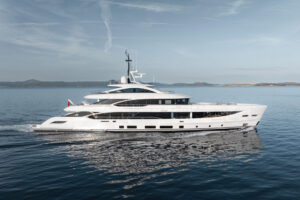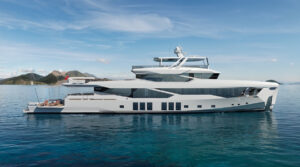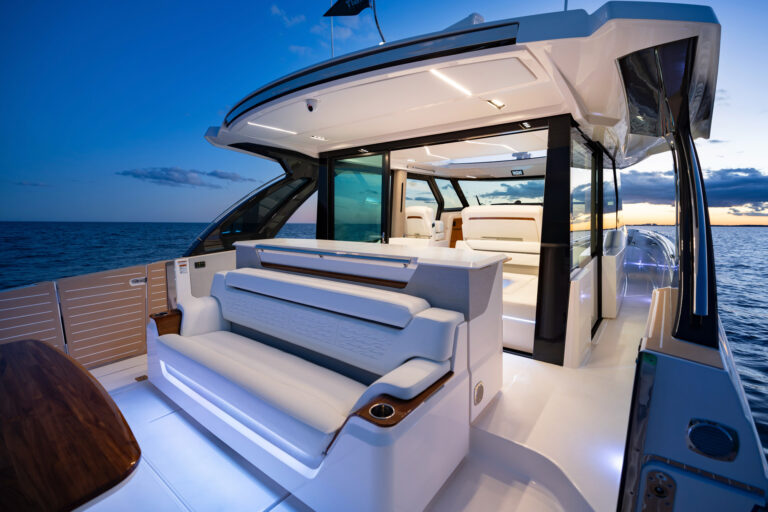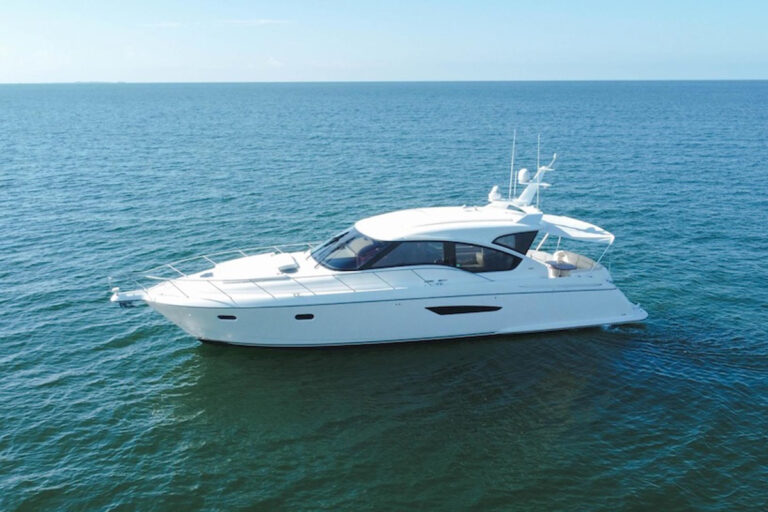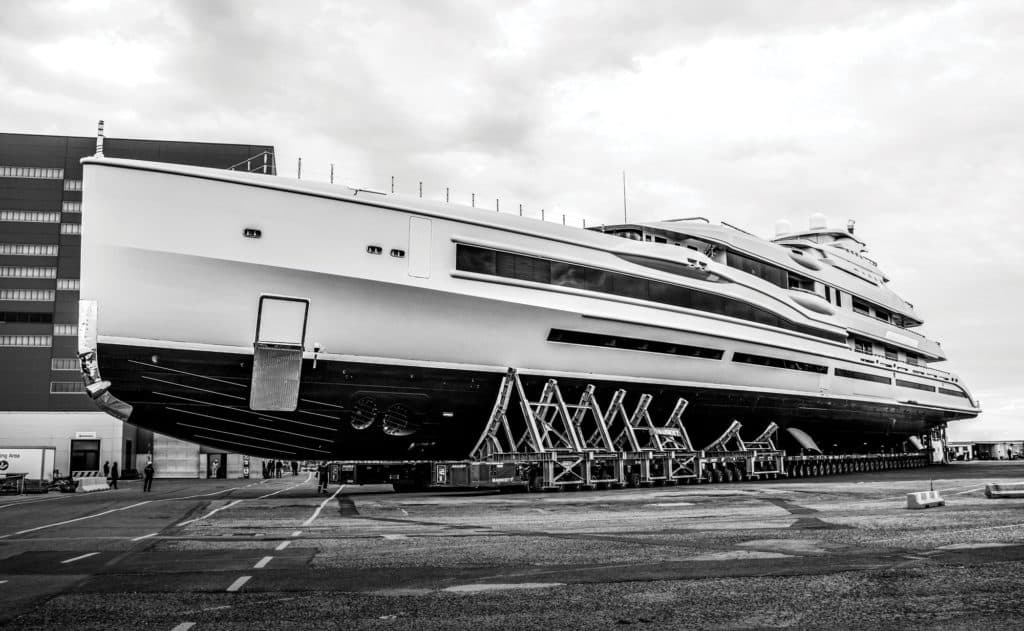
In the early to mid-1980s, when the word mega-yacht came into fashion, 100-footers elicited second looks. A decade later, yacht designers stood amazed at requests for 150-footers. These days, private yachts twice that size—and larger—are slipping into the water, leaving even jaded professionals astonished.
It’s the era of the giga-yacht.
A buzzword, really, giga-yacht loosely defines supersize superyachts. Benetti recently began using the term for yachts exceeding 100 meters, or about 328 feet, in length. The size range is a new focus for the shipyard, producing noteworthy results. From December 2018 through this past April, it launched not one but three of these yachts—its first three.
Given that just one custom yacht, regardless of size, requires years of planning, the act of building three simultaneously requires an even higher level of organization. Consider, then, that the shipyard’s management team set out to launch these three within 100 days of one another, with each of the three hulls being larger and more complicated than the previously largest Benetti. Appropriately sized construction sheds were only the beginning of the significant investments required to make this vision a reality.
To understand how Benetti got to this point, take a look at its history. Nick Bischoff, the builder’s manager for the Americas, points to two significant deliveries: Nabila and Lionheart. The 262-foot, 1,768-ton Nabila (now Kingdom 5KR) launched in 1980, a time when yachts half her dimensions were extraordinarily rare. Lionheart followed in 2016, with a length overall of 295 feet and gross tonnage of 2,990.
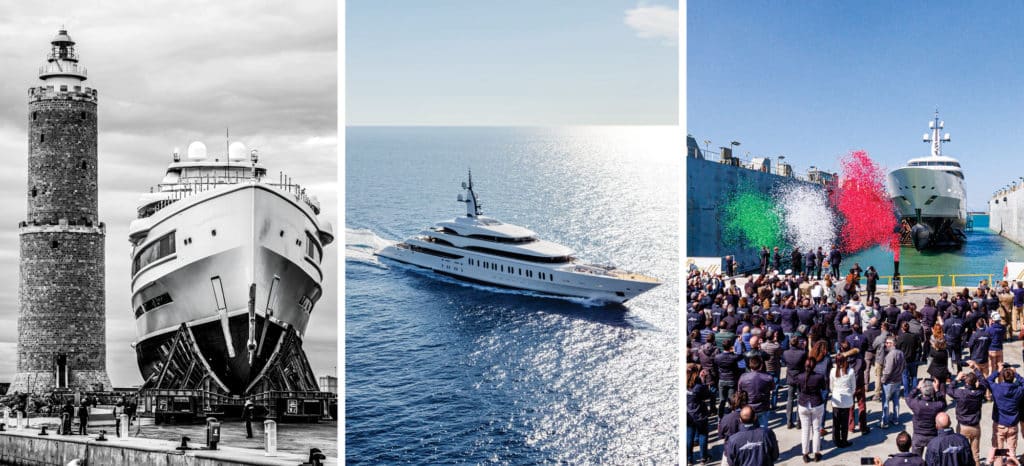
By that point, the decision to venture into even larger territory had already been made. Benetti publicly acknowledged it had two of the three giga-yachts in build in late 2014.
Not that going bigger was an overnight decision. First, the shipyard needed a crucial element: an interested client. It didn’t yet have the facilities for such large projects, so following the “if you build it, they will come” philosophy wasn’t prudent. Thankfully, the problem solved itself.
“Building giga-yachts was an adventure upon which we chose to embark following the request from one of our repeat customers,” says Franco Fusignani, Benetti’s CEO.
The management team also analyzed the marketplace. While numerous shipyards catered to mega-yacht buyers, few were capable of giga-size projects. In addition, the builder noted that only a little more than a dozen giga-yachts were on the water. Benetti saw an opportunity with limited competition: the chance to assert itself as the only privately owned Italian shipyard targeting the market.
Proceeding required a balancing act, though. Fusignani says Benetti strove for “a larger shipyard that allowed us to increase the production capabilities without hindering the production of the GRP yachts of the Benetti Class category.” Among the yard’s locations in Italy, Benetti’s Livorno facility—where its custom metal mega-yachts take shape—was the logical choice. Benetti added two sheds, each measuring approximately 192 feet by 450 feet and 100 feet high. Each one includes two 40-ton-capacity gantry cranes.
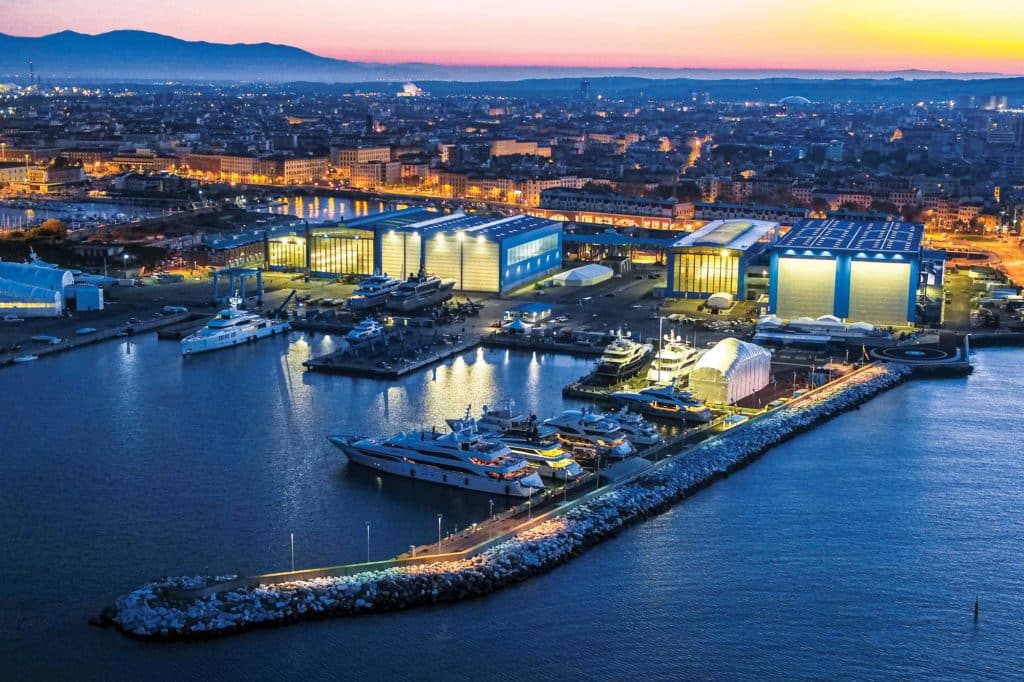
Benetti also needed to invest in skilled personnel and create teams for each construction area. While all three yachts were in build, “we estimated that around 800 workers joined the Livorno facility daily,” Fusignani explains. “We managed a day-to-day agenda dividing three teams for the three boats and a fourth ready to step in and help in any task when required.”
This type of organization was familiar territory for Fusignani, who oversaw large maritime and transportation corporations prior to joining Benetti several years ago. “I have learned that the head of each team had to be side by side with the hands,” he says. “Only in this way, you can be ready to solve the problems that certainly will arise.”
All told, Fusignani says, Benetti spent about $16.7 million from infrastructure improvements to manpower. “The ramp-up was amazing,” Bischoff says.
So too are the distinctions among the three yachts. FB277, the first to launch, is a 351-footer designed entirely by Benetti. Seven guest staterooms are on the main deck, while the master is on the bridge deck. A nearly 5,550-gallon sun-deck pool and a spa with a hammam are also aboard. FB277 has diesel-electric propulsion and a full-load displacement of 3,300 tons.
February saw the launch of FB272. Displacing more than 5,500 gross tons, she is slightly longer than FB277 at 353 feet. The owner worked closely with a handful of design firms in styling the six decks, which have more than 8,600 square feet of glass. He also requested a waste-heat-recovery system to lessen generator use, as well as a hybrid propulsion system with two Azipods and six gensets.

Finally, FB275 splashed in April. Christened IJE, she is the biggest of the three giga-yachts at 354 feet and a volume of 3,367 gross tons. She has more than 10,764 square feet of alfresco areas, including a fire pit on the bridge deck. While her owner has an entire deck to himself, he and guests can all gather on the observation deck, the uppermost level.
Benetti isn’t done yet with these supersize yachts, Bischoff says. The yard is in negotiations with two or three clients and hopes to have one giga-yacht in build regularly. Fusignani is keen to apply lessons learned. Because of research on hulls and superstructures, he says, Benetti gained “a degree of standardization” that has multiple benefits.
“We will be able to build more giga-yachts and faster, following every need and request given by owners,” he says. “But at the same time, we will be able to apply this improvement to our smaller yachts.”
Take the next step: benettiyachts.it


